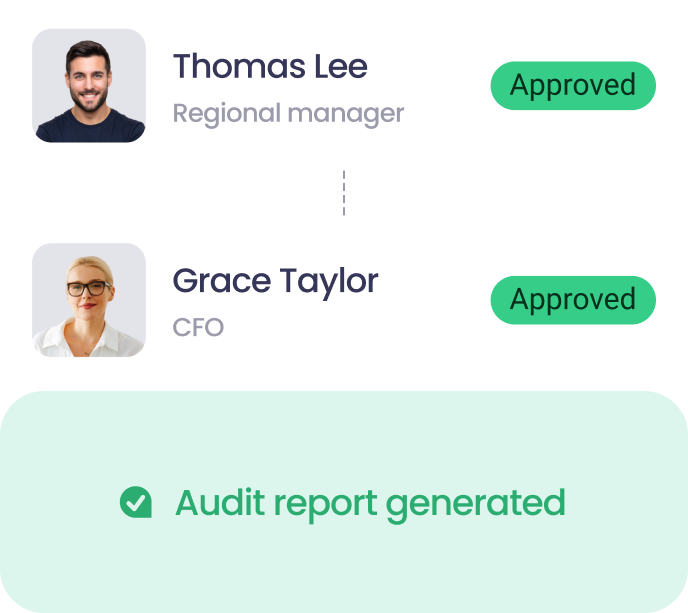
Navigating the tariffs, uncertainty and beyond
The recent US tariff announcements sent markets and industries across the world into a tailspin. So how do you navigate this uncertainty moving forward? It helps to know exactly where you are – and that’s where technology comes in.

The recent US tariff announcements sent markets and industries around the world into a tailspin in an instant. And while some have been wound back to a degree, businesses and consumers are already feeling the pinch (especially as the US tax loophole ends), coupled with the shock of how quickly a stable situation can change.
The last time most organisations experienced this level of overnight shock was the pandemic. While in many of our minds we’ve returned to ‘normalcy’, the sudden imposition of the tariffs is yet another rude reminder of the speed at which markets can change and how much of it is out of our control. For many businesses working with China, the uncertainty remains.
So how do you navigate this? It helps to know exactly where you are – and that’s where technology comes in.
Navigating at speed
Business these days moves at a lightning-fast pace. That means to stay ahead, you need to react just as quickly or risk being left behind. Just think – in an emergency, you need to get to safety. But to do that, you need to first know exactly where you are.
Sailors used to rely on the sun, the stars, and even the way birds flew and fish swam, to sail halfway across the world. These days, it’s much simpler; instead of studying the constellations, it’s easy to pinpoint your exact coordinates in a single click.
The same goes for business technology. Getting a clear view of your organisation’s financial position used to take a heap of manual work, from checking balance sheets and looking back at accounts to busting out the calculator. These days, it’s as straightforward as logging into NetSuite.
Businesses typically fall into one of two approaches:
- You have different systems for accounting, accounts payable and receivable, marketing, HR, inventory and POS. None of them speak to each other, so it can take weeks to pull individual reports and consolidate them into a single view of your business. This makes it hard for your team to crunch the numbers on the impact tariffs could have, especially when they change at the drop of a hat. Not only is this slow, but this manual process has to be done regularly for figures to stay up-to-date.
- You have an accounting or ERP system that connects with other tools, like ApprovalMax, to give you a real-time view of where your business is, all the time. This single source of truth allows you to easily see relevant data and plan for different scenarios, allowing you to jump into strategic planning and redirect business focus to new areas.
The dangers of disconnection
This lack of communication between systems is what Harvard Business Review calls the ‘disconnection debt’ – the cost of disconnected systems on business. Research found that some teams spend up to 60% of their working day on activities related to these systems, such as extracting information from some and entering data into others.
The research also tracked the cost of disconnected systems on different business departments; for finance, this saw lower working capital due to a 16% delay in receivables and higher vendor churn as vendor payments were 20% slower than expected.
Having disconnected systems doesn’t just stop your organisation from moving fast – it can leave you lost at sea, unsure of where to go.
For many businesses, the way they’ve always done things has worked. But as the world moves faster and more unpredictably, it’s not as simple as relying on the old ways of doing things.
Steering ahead
Navigating by the stars worked for centuries, but few sailors looked back once the compass was invented in the 13th century. Now, you’d be hard pressed to find any of the 50,000 merchant vessels sailing around the world’s seas just relying on a compass.
If you find yourself with that compass – or disconnected systems – still in hand, you might wonder ‘what next?’. While the best time to set up strong systems and processes is right from the start, this isn’t realistic for the vast majority of businesses. The next best? Right now. The faster you equip your leaders and teams with the tools they need, the sooner they can steer your organisation forward. The longer you wait, the harder it is to catch up with evolving technology.
The more unpredictability is here to stay, the more important it is to have the right tools at hand to navigate it. The reality of modern business is that it’s changing – and that means the way you do things has to shift too. With so many other priorities, this is a difficult task. It’s hard enough to keep the lights on. But setting yourself up now, with the right systems, tools, and processes, can see you sail to steady seas in the future.
Ready to simplify your approval process?
Konstantin Bredyuk, co-founder of ApprovalMax, began his entrepreneurial journey in 2016 to help SMBs scale faster. Driven by a mission to help businesses build strong financial controls, he leads by example, proudly propelling ApprovalMax’s growth with dedication and hands-on leadership.
Set up a system of checks and balances for your financial operations.
Multi-step, multi-role approval workflows for financial documents.

Auto-generated audit reports for each approved item.

Get alerts for fraudulent activity and protect against it happening.
Leave printing in the past with fully digitised workflows.



